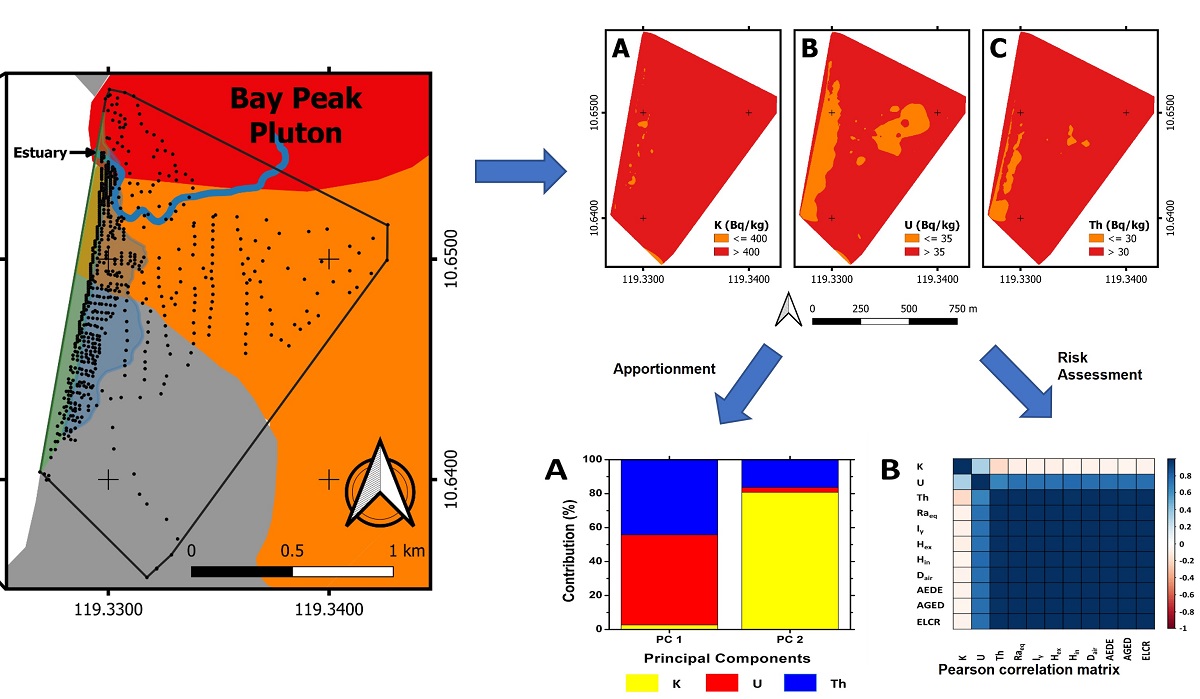Past exploration for U deposit in the Philippines discovered the mineralization of radioactive allanite in Palawan. The allanite occurs as sand component in the heavily populated beach of Erawan, San Vicente, Palawan. This work assessed the risks associated with the radionuclides in Erawan beach by in situ ground radiometric survey of K, U, and Th in 694 sampling points. Principal component analysis (PCA) and Pearson correlation coefficient were used to determine the similarity between the radionuclides and to identify other probable anthropogenic sources of radionuclides. Our results show that the mean activity concentrations of K (597.8 Bq kg-1) and Th (93.15 Bq kg-1) are equivalent to 1.5 and 3.1 times of the world average natural radioactivity levels in soil, respectively, while the mean U (34.7 Bq kg-1) is similar to the world average. The mean radiological risk assessments like radium equivalent, gamma specific activity index, external hazard index, internal hazard index, absorbed gamma dose rate, annual effective dose equivalent, annual gonadal equivalent dose, and excess lifetime cancer risk are 213.96 Bq kg-1, 0.78, 0.58, 0.67, 97.24 nGy h-1, 119.25 µSv y-1, 684.39 µSv y-1, and 0.42 (10-3), respectively. Th consistently correlated most to the risks. We attribute the occurrence of Th to the presence of allanite, K to fertilizer use for farming, and U to both the allanite and farming. The results of our study can provide important baseline data for future detailed studies or monitoring of the long-term effects of elevated radiation levels to the local population of Erawan.

